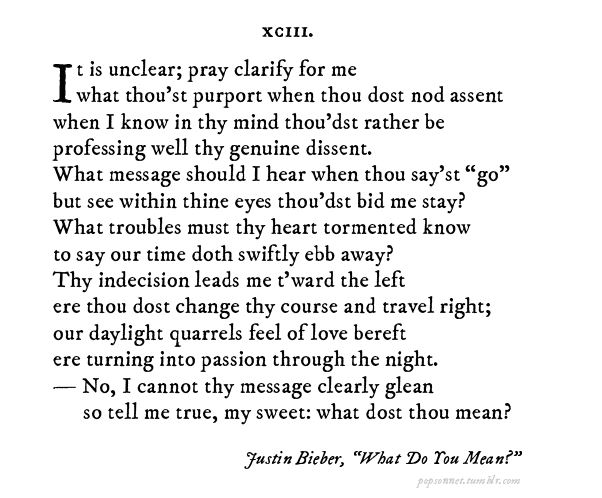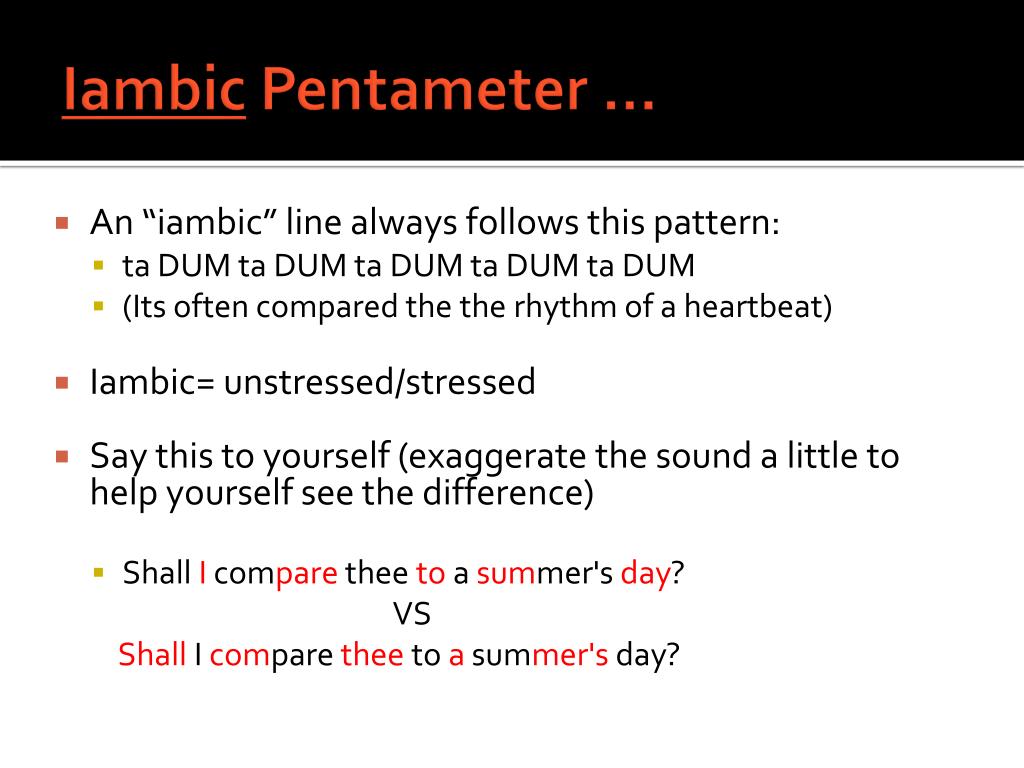

I could never do this if I had rules to follow or a neat little box to fit my words into. I just want to write a short piece that is beautiful and is the best possible expression of what I am feeling or observing. I am not concerned with rhyming or syllables. I think that poetry should be about the freedom to express your emotions as they come, and forcing them to fit into a tight little frame just takes away from their purity. I find the iambic pentameter rhythm very constraining. However, I never once noticed the weak ending on the word “question.” That makes it so much more effective! Shakespeare's iambic pentameter is some of the most famous of all time, and I have heard the line, “To be, or not to be: that is the question,” countless times throughout my life. What a great way to show doubt or a question! I had never heard of feminine endings before reading this article, but I am very impressed by them. I believe that individuals truly talented at iambic pentameter are rare and should be celebrated. I have a blog devoted to meter in Shakespeare's work! This final couplet sums up and resolves the problems expressed in the sonnet's preceding lines.I would venture to suggest that dactyls do not occur in iambic meter: any scansion which includes dactyls is likely to be very confusing.

Write a final couplet with two new rhyming words, GG. Give an unexpected twist to your idea in these four lines. Use the unstressed/stressed rhythm of 10 syllables. Think of a new way to look at the poem's theme as you write the next four lines with the rhyme scheme EFEF. Each line must be 10 syllables long in the limping unstressed/stressed beat, with the lines rhyming as CDCD. Write two more pairs of lines for the next four lines of the sonnet. Use only 10 syllables per line, and ensure that the first four lines rhyme ABAB. Write the first four lines of the sonnet in the iambic meter of unstressed then stressed syllables. Write some pairs of rhymes you will use in your sonnet to express that idea.

Compose Step 1ĭevelop an idea related to a feeling of love. Write the rhyme scheme of a whole Shakespearean or other poet's sonnet.

Line five matches line seven, and line six matches line eight, which can be written as CDCD. When syllables match like that, they can be written as ABAB. The final syllable of line two rhymes with that of line four. The final syllable of of the first line rhymes with that of the third line. Write the sonnet's rhyme scheme on paper. "Iambic pentameter" means 10 syllables of alternating unstressed and stressed syllables. Recite the lines out loud, noticing that they seem to limp or embody a kind of drum beat.


 0 kommentar(er)
0 kommentar(er)
